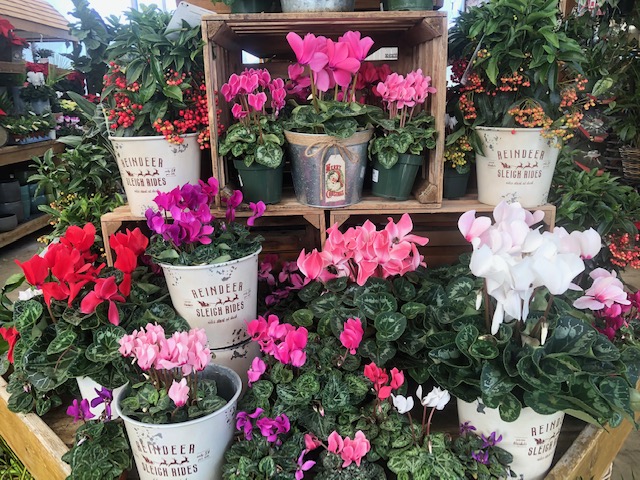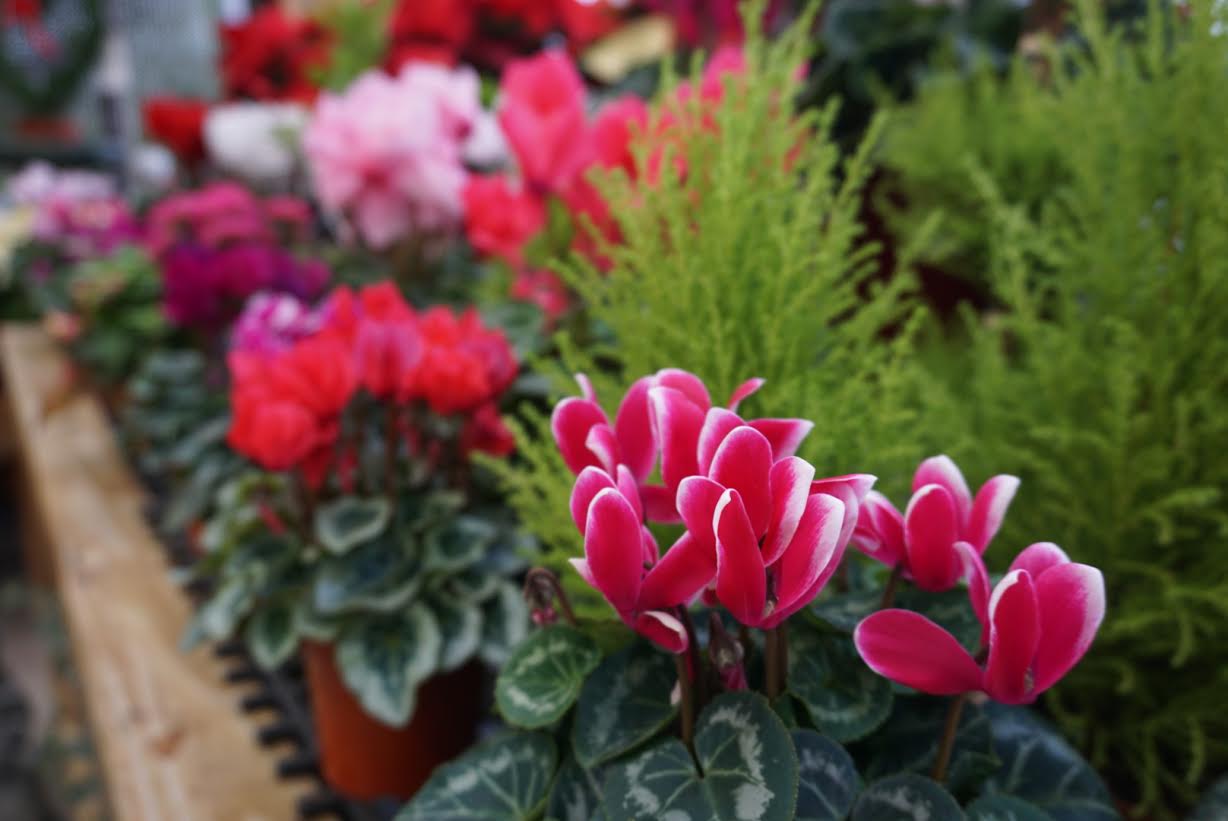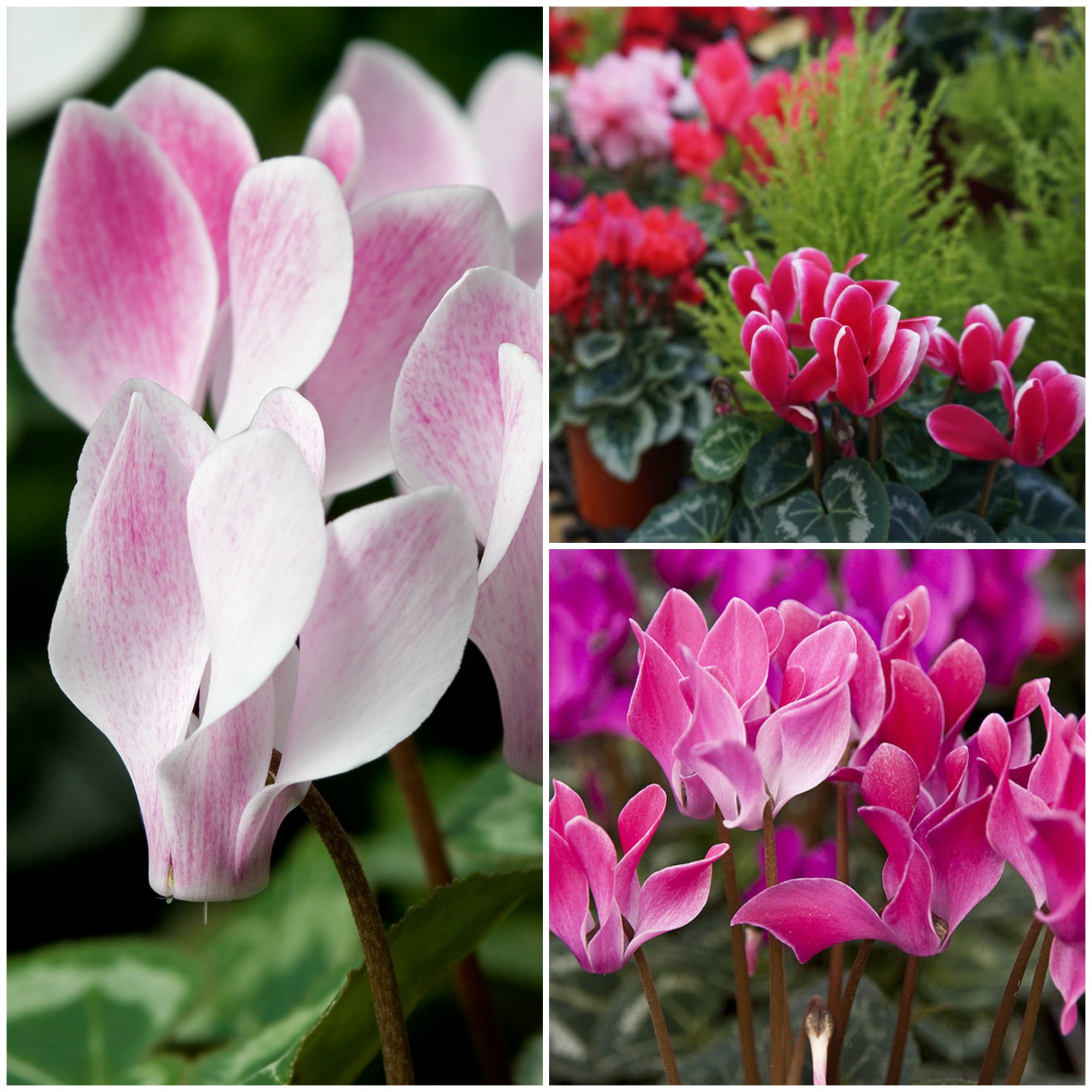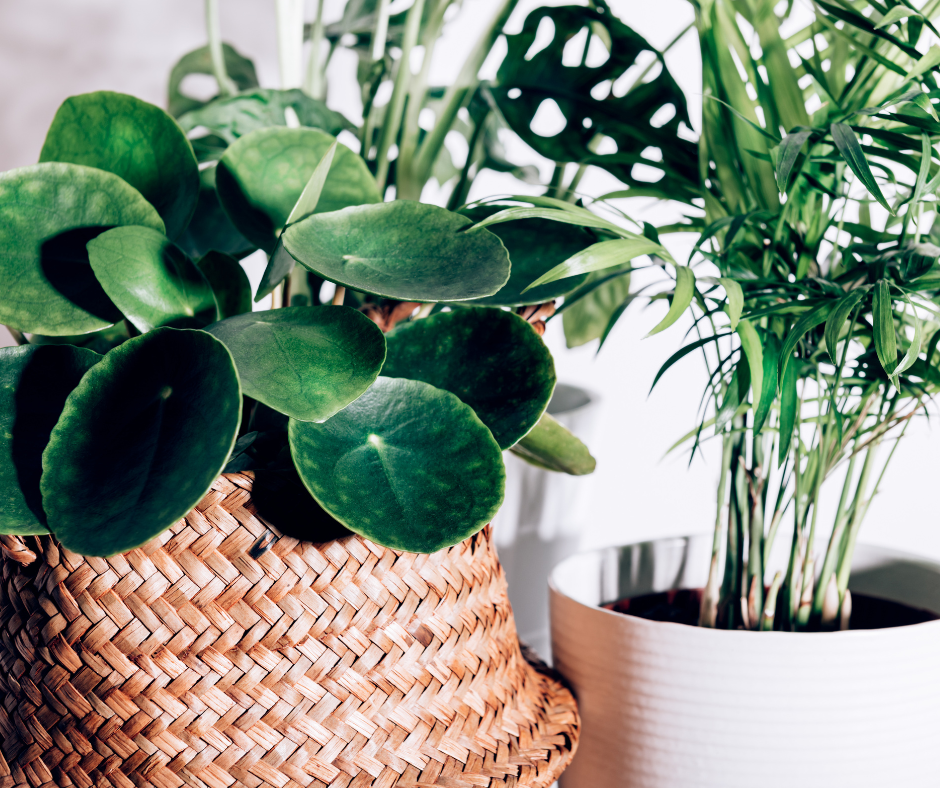 Give life (literally) to a bare wall, empty table or dull corner in your home. Easy to care for houseplants are the most stylish home accessory splashed across pages of design publications, blogs and Pinterest! Forget the dusty, artificial Ficus tree or droopy hanging plant at grandma’s house. Houseplants are on trend and an easy way to add high style to your home.
Give life (literally) to a bare wall, empty table or dull corner in your home. Easy to care for houseplants are the most stylish home accessory splashed across pages of design publications, blogs and Pinterest! Forget the dusty, artificial Ficus tree or droopy hanging plant at grandma’s house. Houseplants are on trend and an easy way to add high style to your home.
Chinese Money Plant, with its striking large circular smooth green leaves, is one of the trendiest plants at the moment. Its full name is Pilea peperomioides and they enjoy bright light and moderate to low water. They are perfect friendship plants as it’s easy to pop a leaf off to give to a friend to propagate.
Fiddle leaf figs have taken the spot in many design magazines and for great reasons. Their bold green leaf can pair with any numerous pots and lend itself to a modern sleek look or a cozy cottage feel. These plants are fairly easy, just place them in indirect light and let them get dry between watering.
Calathea: A bold and beautiful houseplant, calathea looks good even without flowers. There 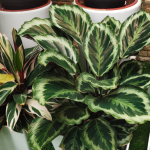 are lots of varieties of calathea, but one of the most common has luscious, dark green leaves that have scalloped edges and silver brushmarks on the top of the leaves. Underneath, the leaves are a lovely shade of burgundy purple. Each one is a living work of art! Grow calathea in medium to low light. This beautiful tropical doesn’t like much sun on its leaves, so shield it from direct light to prevent sunburn. Water calathea enough to keep it moist, but not wet or saturated.
are lots of varieties of calathea, but one of the most common has luscious, dark green leaves that have scalloped edges and silver brushmarks on the top of the leaves. Underneath, the leaves are a lovely shade of burgundy purple. Each one is a living work of art! Grow calathea in medium to low light. This beautiful tropical doesn’t like much sun on its leaves, so shield it from direct light to prevent sunburn. Water calathea enough to keep it moist, but not wet or saturated.
Snake Plant: If you’re looking for an easy-care houseplant, you can’t do much better than snake plant. This hardy indoor is still popular today — generations of gardeners have called it a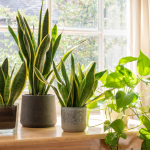 favorite — because of how adaptable it is to a wide range of growing conditions. Most snake plant varieties have stiff, upright, sword-like leaves that may be banded or edged in gray, silver, or gold. Snake plant’s architectural nature makes it a natural choice for modern and contemporary interior designs. It’s one of the best houseplants around! Place in low light to full sun and let dry between watering.
favorite — because of how adaptable it is to a wide range of growing conditions. Most snake plant varieties have stiff, upright, sword-like leaves that may be banded or edged in gray, silver, or gold. Snake plant’s architectural nature makes it a natural choice for modern and contemporary interior designs. It’s one of the best houseplants around! Place in low light to full sun and let dry between watering.
Dracaena has bold and architecturally pleasing foliage. The arching flow of these dramatically striped leaves lends a sense of movement to a tabletop or desk. Plants are content in low light, and need only moderate watering and occasional feeding to thrive. A handsome, low-maintenance accent plant for almost any room.
Wandering Jews, also called spiderworts, are valued for the stripes of white, green, silver, and purple colors of their foliage. They have trailing vines that flow from their base and are very easy to care for. Place them in bright indirect light for best foliage color and let them become slightly dry before watering.
Crispy wave fern: due to its uniquely strong fronds, hardiness, and adaptability, crispy wave 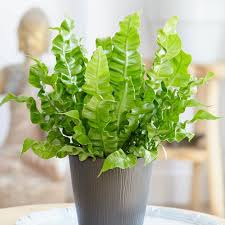 can outlive almost any other potted plant. If you tend to this low maintenance plant properly, it will keep your air naturally clean for a very long time. Place it in medium to low light and never let it dry out!
can outlive almost any other potted plant. If you tend to this low maintenance plant properly, it will keep your air naturally clean for a very long time. Place it in medium to low light and never let it dry out!






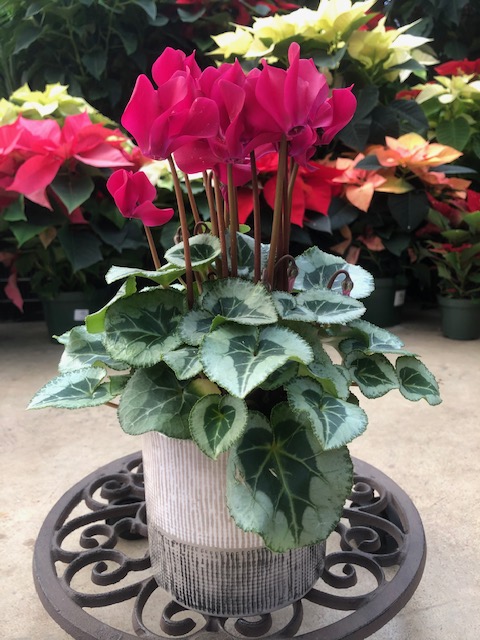 Cyclamen are one of the most beautiful and best winter bloomers. Over the years, growers have come up with many new hybrids for us to enjoy. Some have ruffled flowers, and some varieties are miniature, but all maintain a large bright flower, usually in red, pinks, maroons and white. All Cyclamen display green or variegated heart shaped leaves.
Cyclamen are one of the most beautiful and best winter bloomers. Over the years, growers have come up with many new hybrids for us to enjoy. Some have ruffled flowers, and some varieties are miniature, but all maintain a large bright flower, usually in red, pinks, maroons and white. All Cyclamen display green or variegated heart shaped leaves.